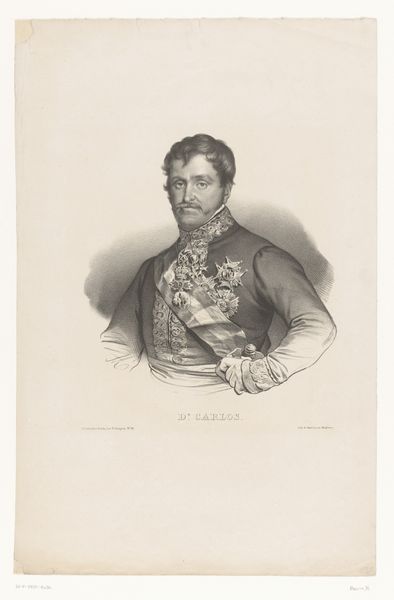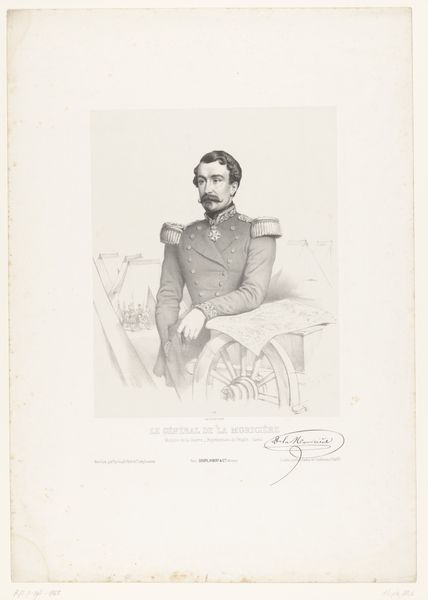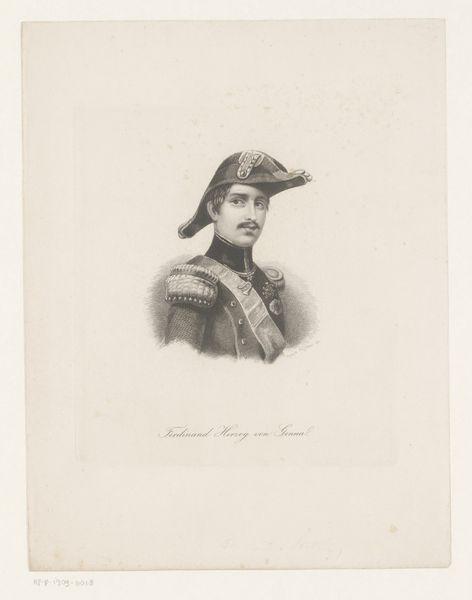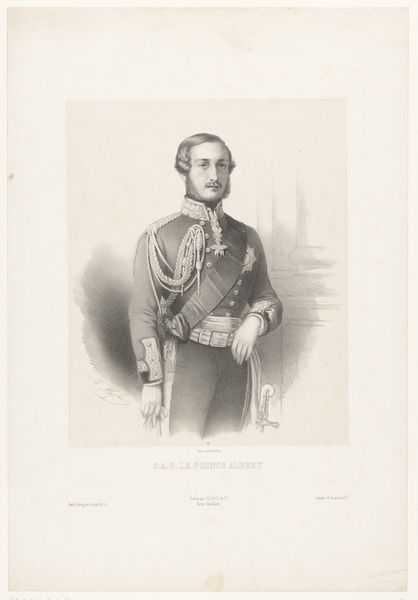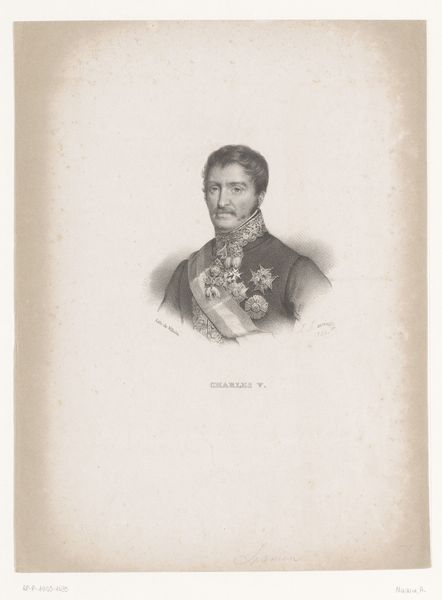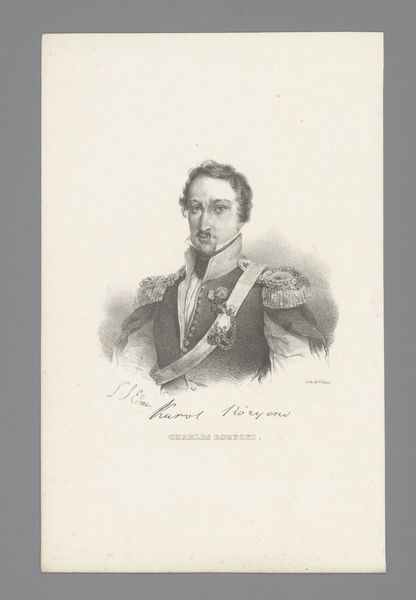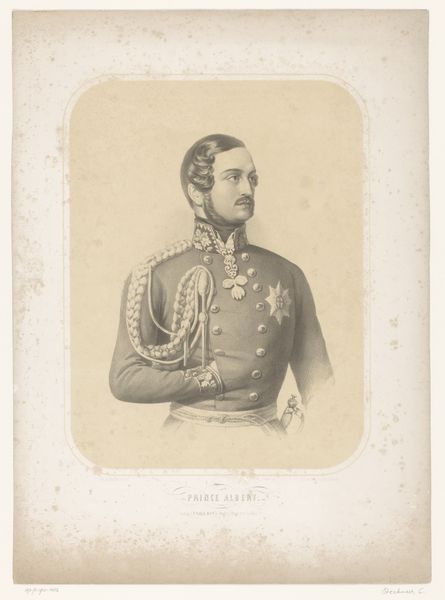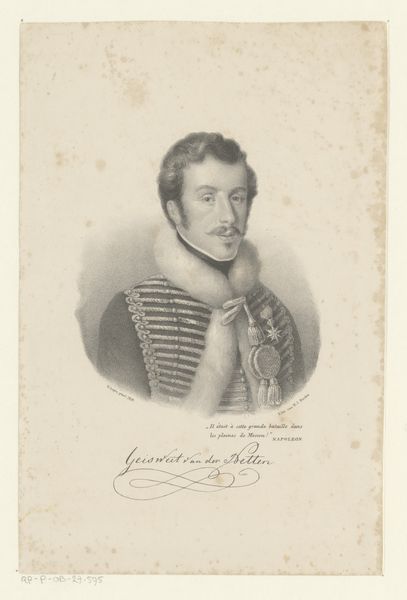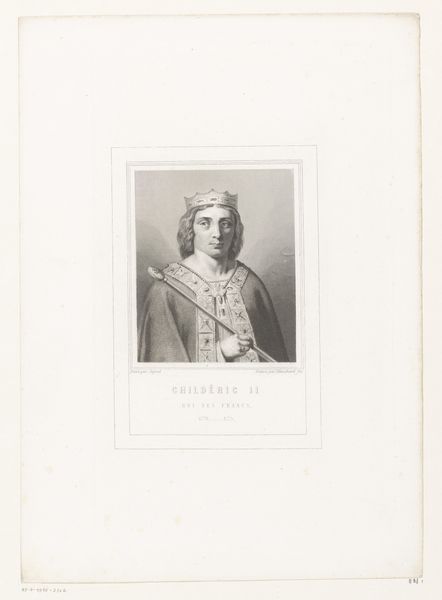
Portret van Frederik Willem, groothertog van Mecklenburg-Strelitz 1817 - 1880
0:00
0:00
drawing, pencil
#
portrait
#
pencil drawn
#
drawing
#
pencil sketch
#
pencil drawing
#
pencil
#
19th century
#
portrait drawing
#
academic-art
#
realism
Dimensions: height 545 mm, width 387 mm
Copyright: Rijks Museum: Open Domain
Curator: This is a pencil drawing by Julius Giere, titled "Portret van Frederik Willem, groothertog van Mecklenburg-Strelitz." The portrait likely dates sometime between 1817 and 1880. Editor: It exudes a restrained dignity, wouldn't you agree? The subject’s gaze seems to hold a certain world-weariness, even melancholy. Curator: Indeed. The academic and realistic approach certainly emphasizes accuracy in depicting the Grand Duke's features. Notice the meticulous detail in rendering the textures of his uniform—the shine of the buttons, the delicate fringe, and the various adornments. Editor: While the details are skillfully rendered, it’s hard to ignore the context. Grand Duke Frederick William ruled during a period of considerable social upheaval. How might the artist have been influenced, consciously or unconsciously, by the pressures to legitimize or idealize authority? The pencil drawing perhaps underscores the vulnerability inherent in positions of power, or even subtly undermines the aura of untouchability generally surrounding monarchy. Curator: An intriguing perspective. It also occurs to me that Giere skillfully navigates the challenges inherent in working solely with pencil to create a believable image and convey status. There’s an almost photographic clarity in some areas. It would be interesting to research who commissioned it and for what purposes the portrait was eventually deployed. Editor: Absolutely. Commissioning a portrait was very much a calculated political maneuver. What narratives was the Grand Duke seeking to reinforce by being portrayed this way? Consider the choices surrounding his uniform, stance, and the gaze of his eyes... they subtly communicate claims of legitimate power and perhaps a conscious decision to embrace—or deflect from—a rapidly shifting geopolitical environment. Curator: In looking closely at the Grand Duke's clothing, what stands out is how Giere balances textures. Note the smoothness of his face against the almost hyper-realistic detail in the ornamentation. Editor: Exactly. This speaks to a larger dynamic regarding rulers attempting to visually embody conflicting cultural and political imperatives. I would encourage anyone standing here to consider the sitter's role in consolidating or undermining Mecklenburg-Strelitz as an independent region and consider how an ostensibly simple pencil drawing subtly articulates broader themes. Curator: An interesting argument. I will be examining those decorations and the way light renders his cheekbones differently now. Editor: Portraits like these can reveal more than we think. Always ask why this specific approach, this scale, these seemingly minute but potentially charged artistic choices.
Comments
No comments
Be the first to comment and join the conversation on the ultimate creative platform.
